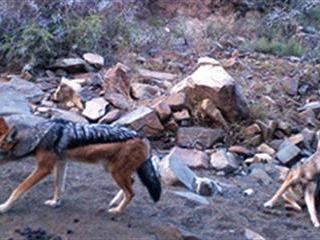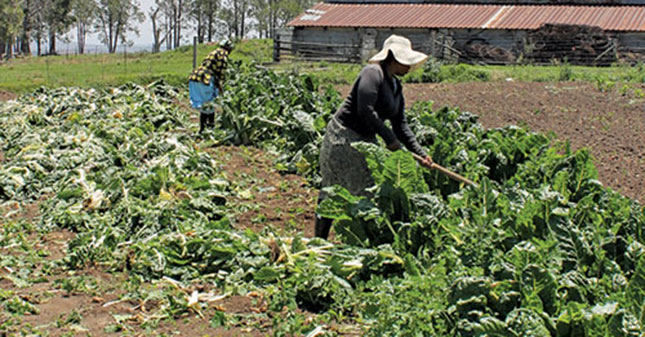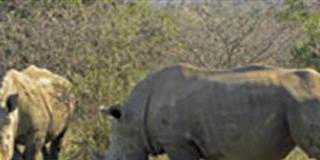
Representing the Glenconner and district predator management forum, Arthur Rudman has outlined a predator control strategy involving a co-ordinated effort by landowners to reduce jackal and caracal populations, so that the threat posed to small-stock populations is reduced. Do you feel this method will work?
Arthur Rudman has been in the farming business for some time. Consequently, he has a tremendous amount of practical experience in the effective extermination of meso-predators (predators smaller than a leopard). He is absolutely correct when he says that a co-ordinated cull of predators will increase livestock yields. That is logical. However, I am not at all convinced that this approach is sustainable in the long term or based on any solid evidence. Unsubstantiated claims without empirical support cannot be seen to be evidence.

Dr Dan Parker
Commercial livestock farmers have been battling with the issue of predation on their ‘cash cows/lambs’ for more than 200 years. Clearly, predators eat other animals to survive. This kind of human conflict with predators is not a new phenomenon neither is it unique to South Africa. What is curious, is that Rudman and his colleagues seem to be caught in a state of inertia when it comes to managing the conflict.
Livestock farmers have been shooting, trapping, poisoning and generally trying anything to kill the predators that eat into their profits for the past two centuries, yet predators remain the single biggest problem cited by farmers for their stock losses. If killing predators is as successful as Rudman claims, why do farmers still complain that predators are such a problem? The reason black-backed jackal and caracal no longer have any natural enemies is that the larger (apex) predators were exterminated by hunters and farmers, on the same path as Rudman and his fellow farmers, over 100 years ago.
Could this strategy not mimic the role played by the bigger predators in controlling meso-predators?
The answer is, unfortunately, no. Not only do apex predators actually kill smaller predators, they also alter meso-predator behaviour, and it is this altering of behaviour that is arguably more important. I am not suggesting that livestock farmers should re-introduce lions and leopards onto their properties. I am, however, suggesting that killing predators got farmers into this mess and it is extremely unlikely that continuing to kill predators will get them out of it.
So how can livestock farmers manage their conflict with predators?
In my opinion, the first step is to critically reflect and analyse the causes of stock losses. Most farmers are extremely diligent about keeping records of stock losses, among other data. They should dig out their notebooks and diaries and extract the necessary information.
Ask the hard questions: how many lambs do I lose to disease, stock theft, birth defects, feral and stray dogs and predation every year? Is what I am doing to combat the problem working in the long term? Are predators really the biggest problem?
Calculate, over time, what the main causes of the stock losses are and then take appropriate action. Baseless statements about predator numbers increasing and this affecting the economics of livestock farming do not help at all and serve only to add fuel to an already burning anecdotal fire.
What mechanism allows jackal and caracal populations to grow despite determined efforts to control them?
Several factors contribute to the overall success of meso-predators, despite concerted efforts by farmers to control their numbers. Probably most significant among these is that a blanket culling approach (although extremely successful in the short-term) will undoubtedly result in a breakdown in meso-predator social structure and general behaviour. For example, black- backed jackal pairs will actively defend their territories against intrusion by other jackals. Removing the dominant pair creates a vacuum which is often filled by dispersing sub-adult animals looking to establish territories for themselves (possibly more than just one pair).
Rudman complains that game farms owned by apathetic businessmen ‘breed’ meso-predators because they do not control meso-predator populations on their farms. However, his blanket killing approach is effectively doing the same thing. This is not some outlandish idea that has been cooked up in the ivory towers of universities. There are numerous published field studies across Africa (and the world) clearly demonstrating that when the population dynamics of a predator population are upset (by hunting for example) the animals will compensate by producing larger litters, dispersing over bigger areas and altering their behaviour. This is bad news for the livestock farmer.
What is the reproduction rate of the black-backed jackal?
The black-backed jackal establishes a pair bond and starts breeding between 12 and 24 months. The gestation period is 64 days and the litter size varies between one and six pups with an average litter size of three. Pup mortality can be high with an average survival rate of about 50%. At six months, or when they can hunt, young jackals leave their parents, although some sub-adults stay for up to two years to help with new litters. Nevertheless, the average size of a group is two animals. Only when food is ‘super-abundant’, as at the seal colonies in Namibia, have significantly larger groups been regularly recorded.
The Glenconner PMF has questioned the wisdom of placing the Cape fox on the protected species list. They state that the Cape fox predates on newborn animals and that its population may be on the increase. What is your comment?
The Cape fox is a small canid weighing no more than 3kg that feeds mainly on insects, rodents, small reptiles, birds and carrion. Livestock remains have been recorded in the stomachs of Cape foxes in two studies in South Africa. These are believed to be a result of opportunistic scavenging on carrion. There is no documented evidence of this species actively preying on lambs. The reason to put the Cape fox on the protected species list must be based on data from the entire range of the species.
Rudman has accused scientists of misleading farmers, especially those with little agricultural background. Do you feel that the scientific community and the various conservation bodies have failed farmers, lacking the necessary pragmatism required for agricultural solutions?
I think, to an extent, yes and I think the main reason for this is because the various groups aren’t really talking to each other. Scientists, farmers and conservationists need to get together and put their heads around this issue as a collective. We cannot simply continue ‘doing our own thing’ and disregarding the vast amount of knowledge, skill and experience of other groups.
The scientists do not see killing all the predators as the solution, while the farmers believe it is the only solution. In order to breach this impasse, individual egos and intellectual arrogance will have to take a back seat. I firmly believe that if we can all work together, pragmatic and long-lasting solutions for the issue of livestock loss through predation can be found.
Contact Dr Dan Parker at Rhodes University on 046 603 8530













